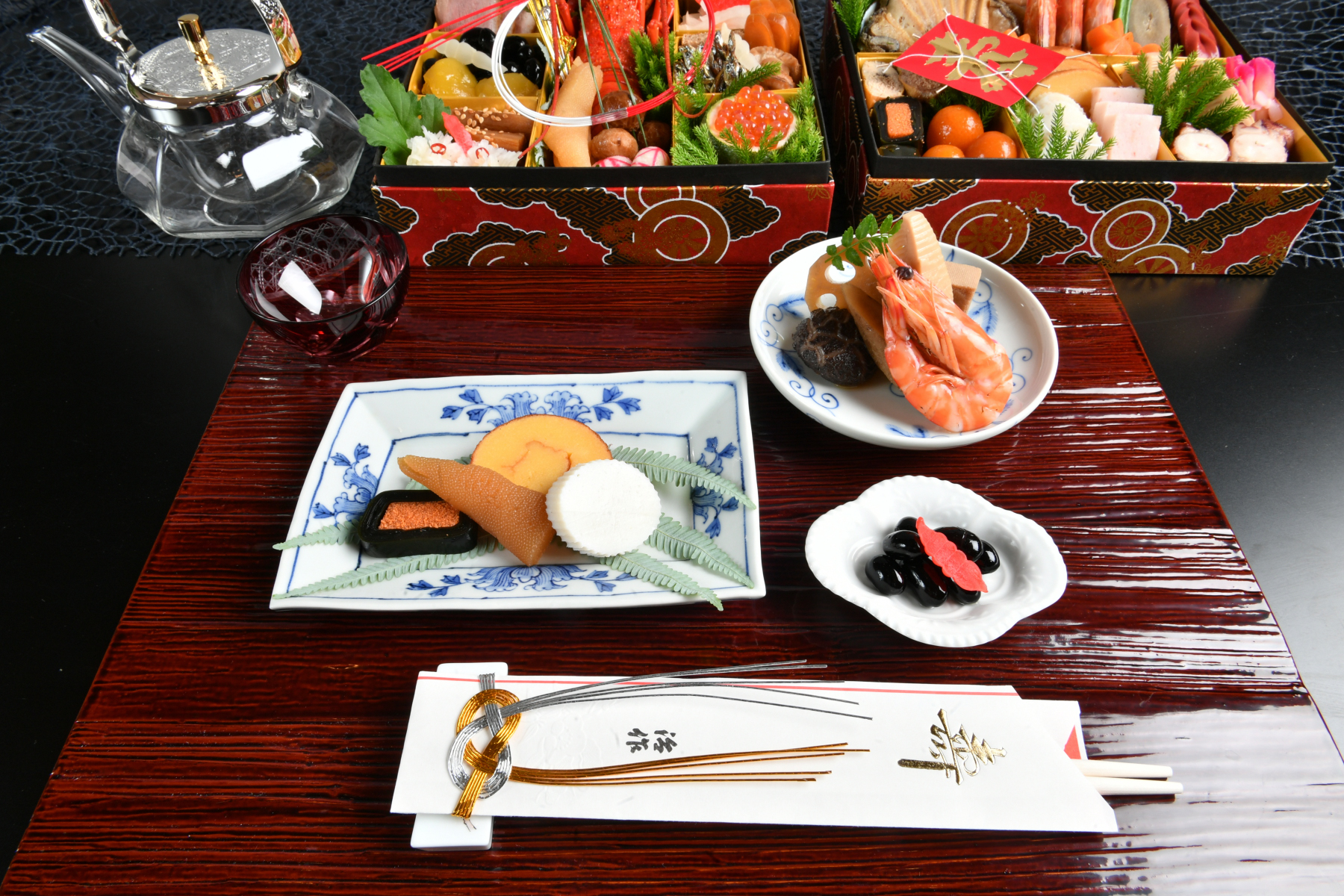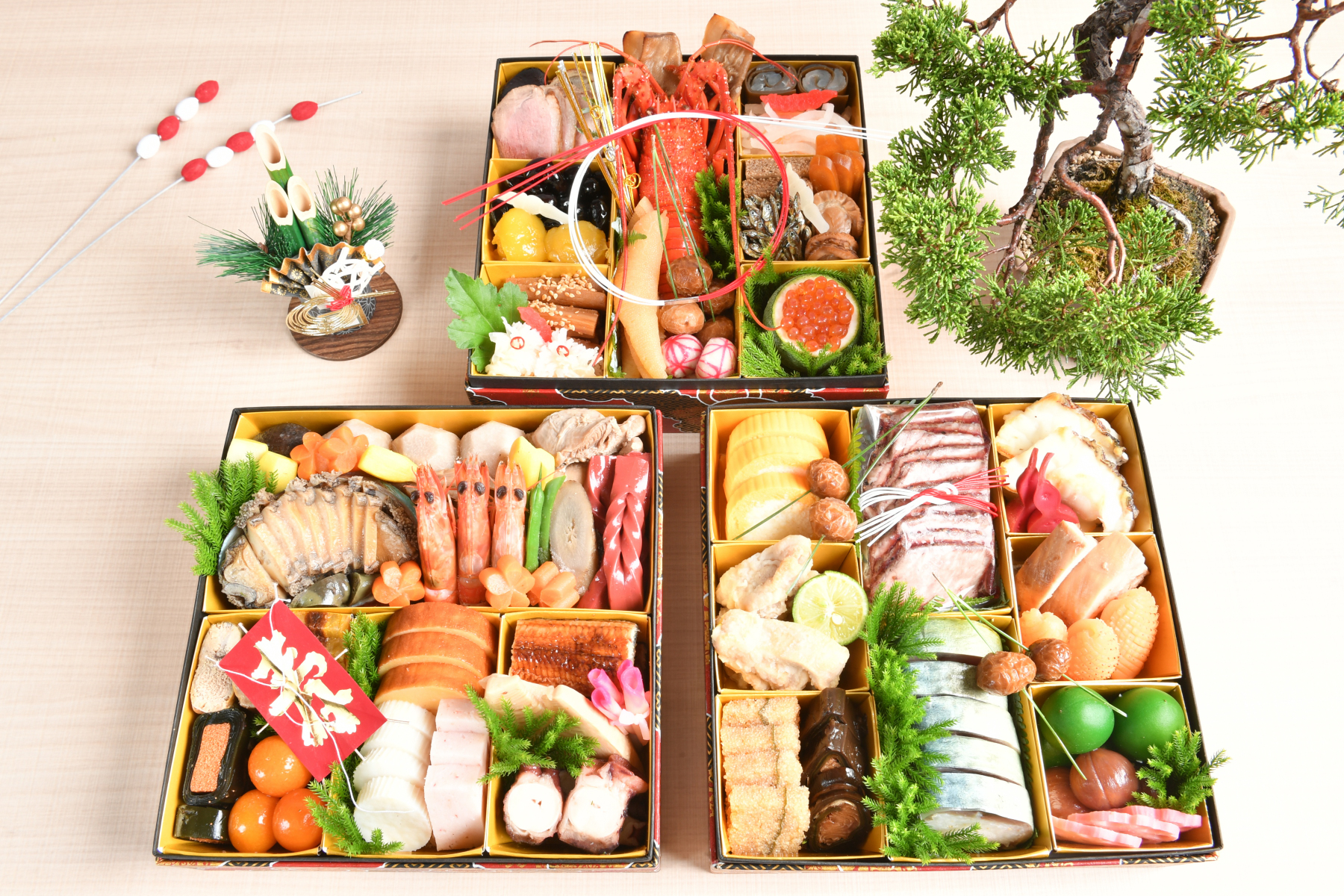1. the meaning of Osechi ryori - a festive table to celebrate the New Year
Osechi ryori is a special dish to celebrate the New Year, and has been passed down from generation to generation as a good omen to pray for good health and a bountiful harvest for the family. Each dish is filled with wishes for health, longevity, and prosperity of offspring, and the beautiful arrangement of the dishes in a stacked box also expresses the meaning of "piling up good fortune. The elegant arrangement of the dishes, as only a ryotei restaurant can provide, makes your New Year's table even more colorful and festive.


History of Osechi Rituals - A Tradition that Spread from Courtly Customs to the Common People
The origin of Osechi dates back to the Heian period (794-1185). The origin of Osechi-ryori dates back to the Heian period (794-1185), when it was offered to the gods at each seasonal event. The dishes offered on festive occasions such as Momo-no-Sekku (Peach Festival), Children's Festival, and Chou-you-no-Sekku (Chou-you-no-Sekku) were called "Osechi-ryori" and shared at the dining table, and gradually became established as a dish to celebrate the New Year. During the Edo period (1603-1867), Osechi ryori spread into the daily lives of the common people, and such traditional dishes as black soybeans, herring roe, and datemaki, which are still popular today, have been handed down from generation to generation.
3. modern osechi cuisine - diversification and ryotei's commitment
Today, Osechi dishes are not only homemade by family members, but are also becoming popular as "order-in Osechi" dishes that are reserved at ryotei (traditional Japanese restaurants) or specialty stores. While Western and Chinese styles are also being fused together, the appeal of ryotei osechi is the authentic flavor of carefully selected seasonal ingredients and the painstaking attention to detail that craftsmen put into each dish. The gorgeous appearance and elegant dishes continue to be the choice of many customers as an excellent product suitable for New Year's gatherings.
Introduction to the auspicious dishes included in Osechi cuisine
- black soy bean
This dish is a wish for good health and diligence, from the word "mameyasu" (to live well). It is also meant to pray for long life and good health. - herring roe
A herring roe, symbolizing the prosperity of numerous offspring. It is a staple of Osechi to wish for the happiness of a new family and the prosperity of the clan. - rolled omelette mixed with fish (paste) (omelet)
This dish is designed to wish for "academic achievement" and "cultural prosperity" due to its resemblance to the shape of a scroll. Its sweetness and fluffy texture are typical of ryotei (traditional Japanese restaurants). - type of food (sliced dried herring or other fish wrapped in konbu seaweed and boiled)
This dish is said to bring happiness and good fortune because of the word "yokobo" which means "to be pleased" in Japanese. It is a lucky charm suitable for celebratory occasions. - lobster
It is a symbol of longevity, wishing for a long and healthy life until one's waist bends. The red color also represents protection from evil and happiness.
![Tsukiji Jisaku [Official] Ryotei Famous Mizutaki -Official direct reservation special offer-.](https://jisaku.co.jp/wp-content/uploads/2025/01/header-logo.png)
